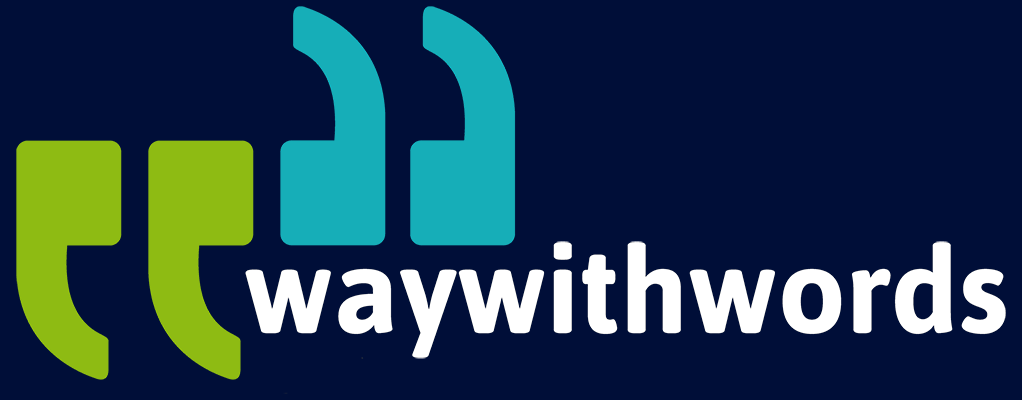What is the Impact of Regional Slang in Speech Model Accuracy?
The Relationship Between Regional Slang and Speech Model Performance
Speech recognition systems have come a long way from their early days of struggling with strong accents or even basic background noise. Today’s models are increasingly capable of transcribing structured language with high accuracy. However, one major frontier still challenges even the most advanced automatic speech recognition (ASR) systems: regional slang.
From hip-hop-inflected English in urban America to street Afrikaans in Cape Town, regional slang is more than just colourful phrasing. It’s a living, breathing, and fast-evolving form of communication that plays a vital role in expressing identity and belonging. Yet, in the world of voice-based artificial intelligence (AI), regional slang remains an underrepresented and often misunderstood dimension—leading to systematic inaccuracies that frustrate users and skew data-driven outcomes.
In this article, we explore the intricate relationship between regional slang and speech model performance. We look at how informal language patterns impact ASR accuracy, what steps are being taken to include these in voice AI development, and how data teams and linguists can better support the evolution of ASR through smarter documentation and training strategies.
What Is Regional Slang?
Regional slang refers to informal, often localised language that emerges organically within specific communities, subcultures, or geographic regions. It encompasses words, phrases, or pronunciations that may be unfamiliar—or even completely indecipherable—to people outside that community.
Unlike standardised language forms governed by formal education or national media, slang evolves rapidly and irregularly. It draws heavily from lived experience, social trends, local history, and even pop culture. In some cases, slang functions as a kind of verbal shorthand that expresses complex social meaning in just a few words.
For example:
- In South London, saying someone is “peng” means they’re attractive.
- In Johannesburg, to “jol” means to party or have a good time.
- In Toronto, “mandem” refers to a close-knit group of male friends.
- In parts of Australia, calling someone a “unit” means they’re physically imposing, not a measurement device.
These expressions might be perfectly clear to locals, but they can be utterly confusing to outsiders—including voice AI systems that rely on predictable and well-represented vocabulary.
Slang also functions as a tool of in-group identity and can signify belonging or exclusion. For researchers and developers working on natural language processing (NLP) or ASR systems, ignoring regional slang means ignoring a crucial piece of the social puzzle—especially in applications like smart assistants, social media monitoring, call centre automation, or content moderation.
Crucially, slang is not static. New terms are coined constantly, while older ones fade out or change meaning. This dynamism is one of the main reasons ASR systems have difficulty keeping pace with informal speech. Without regular updates and targeted data collection, even the most powerful models struggle to keep up.
How Slang Confuses Speech Models
Voice recognition systems are designed to work best when they are exposed to the kind of language they’ll be expected to interpret. Standard English? No problem. Legal jargon or technical terms? Easy, if they’ve been included in the training set. But slang? That’s where things begin to break down.
Most ASR systems are trained on vast quantities of structured, formal, and often written language data. This includes sources like audiobooks, news reports, court recordings, customer service calls, and corporate meeting transcripts. These sources are rich in grammar but sparse in regional or informal expressions.
Let’s take a real-world example. In urban areas of the UK, the word “safe” is often used to mean “okay” or “cool”:
“You coming to the game later?”
“Yeah, safe.”
A standard speech model might transcribe that as:
“Yeah, save.”
or
“Yeah, safee.”
Misrecognition like this can distort search queries, prevent proper voice command execution, or even mislead sentiment analysis tools.
Another challenge lies in pronunciation variation. Regional slang often includes phonetic shifts or stress patterns that diverge from standard forms. For instance:
- A New York speaker might say “yo, that’s mad funny”—where “mad” intensifies “funny”.
- A Cape Flats speaker might say “aweh” to signal agreement or greeting—pronounced more like “ah-weh”.
Unless the model has been specifically trained on these variants, it’s likely to either miss the meaning entirely or substitute in unrelated words from its known vocabulary.
This misrecognition isn’t just annoying—it can be costly. In call centre environments, it may lead to failed customer interactions. In legal or medical contexts, it can result in flawed documentation. And in AI moderation tools used on social platforms, it can mean failing to catch harmful speech or misidentifying harmless slang as offensive.
To make speech models truly inclusive and effective, developers must account for the informal language voice AI systems are increasingly expected to understand.
Documenting Slang in Transcripts
For those responsible for data annotation, transcription, or building training corpora, regional slang presents a particular challenge: how to document what may not yet exist in any official dictionary.
Transcription best practices often call for literal, verbatim records—but when a speaker uses a slang term that isn’t widely recognised, annotators may be tempted to substitute, paraphrase, or skip it altogether. This undermines both the integrity of the dataset and the opportunity for the model to learn from authentic usage.
Here are some best practices for annotating regional slang:
- Use verbatim transcription as a baseline. Always record the spoken word exactly as it is said, even if it’s unfamiliar or seems like a mispronunciation. Avoid “correcting” or “standardising” speech, especially in training data.
- Include speaker notes where needed. If the meaning of a slang term is known, it can be added in brackets or as a footnote. For example:
“He was proper vexed [angry] about the delay.” - Tag new or emerging slang. If a term appears that hasn’t been seen before, flag it for lexicon teams or linguists. Keeping track of these occurrences helps NLP teams build up-to-date glossaries of emerging informal language.
- Capture pronunciation patterns. If a slang term is pronounced in a unique way, include a phonetic version in an accompanying column or metadata field. This helps speech model teams better train phoneme recognition.
- Retain context. Meaning in slang often depends on usage. A word like “sick” could mean “ill” or “amazing,” depending on tone and placement. Annotators should preserve enough surrounding dialogue to help researchers or models infer the intended use.
- Educate transcription teams on regional differences. Annotators from outside a particular region or dialect group may unknowingly alter slang phrases during transcription. Providing reference guides, glossaries, or onboarding videos can help mitigate this.
Documenting regional slang effectively ensures that these expressions aren’t treated as noise or error. Instead, they become a valuable part of the dataset that helps ASR and NLP tools better reflect the richness of real-world speech.

Incorporating Slang into Model Training
Once slang is documented, the next step is incorporating it into model training. This process can be complex, particularly because slang is often rare or inconsistent in available datasets. But there are proven strategies that developers and linguistic data teams can use to strengthen model performance on informal language.
- Crowdsourcing Slang Usage
One of the most effective ways to build slang datasets is through targeted crowdsourcing. By inviting speakers from specific communities to contribute audio clips using local slang, developers can gather high-quality, diverse examples of informal speech.
Tips for crowdsourcing slang:
- Create prompts that elicit natural, everyday speech.
- Avoid formal reading tasks—encourage story-telling, conversation, or improvisation.
- Ensure demographic diversity across contributors.
- Include metadata about the speaker’s region, age, and language background.
- Tagging and Expanding Lexicons
Building a dynamic slang lexicon is essential for NLP teams. This can be done through:
- Mining social media platforms for emerging terms.
- Partnering with local cultural experts or urban linguists.
- Tracking usage trends across regions and age groups.
- Developing a tagging system that includes pronunciation variants, semantic shifts, and usage examples.
These lexicons should feed directly into ASR language models to improve word recognition and contextual understanding.
- Evolving Datasets Over Time
Slang datasets can’t be static. Terms lose popularity or change meaning within months. For this reason:
- Models should be retrained periodically on updated slang corpora.
- Version control should be applied to datasets, allowing comparison across time frames.
- Annotators should be encouraged to submit new terms and flag obsolete ones.
- Domain-Specific Training
Some slang is context-bound—common in gaming, hip hop, or street fashion circles, for example. Training separate domain-specific models or using fine-tuning techniques on slang-rich domains can boost accuracy for industry-specific applications like gaming chatbots, youth-focused virtual assistants, or influencer analytics tools.
Adapting to Language Evolution in Speech AI
Language is always in flux. But unlike standard grammar or vocabulary, slang evolves at hyperspeed, often shaped by viral content, migration, cultural trends, or political shifts. For speech AI systems to remain relevant, they must adapt to this constant evolution.
Continuous Learning Pipelines
Modern ASR systems increasingly employ continuous learning models. These are pipelines that regularly ingest new data (often from live sources), update language models, and adjust prediction weights. To be effective:
- Incoming data must include informal and regional speech.
- Filtering mechanisms should differentiate between noise and new valid slang.
- Data privacy and ethical sourcing practices must be maintained.
Community-Driven Intelligence
Regional communities should be involved in the development of the tools designed to understand them. This can include:
- Feedback loops where users can flag misrecognised slang.
- Public-facing tools for submitting new terms.
- Partnerships with schools, local media, or youth organisations to document new trends.
Real-World Use Case: Call Centre Automation
Consider a South African call centre deploying ASR to transcribe and triage customer service calls. If the model fails to understand informal Afrikaans-English code-switching or township slang, it risks major errors. Real-time transcription will mislabel the customer sentiment or misunderstanding intent, leading to poor service or failed automation.
By embedding slang-aware models and continuously refining them using real transcripts and customer interactions, companies can dramatically improve performance and user satisfaction.
Final Thoughts on Regional Slang in Speech Recognition
Regional slang is not a problem to be fixed but a dimension to be embraced. It reflects the authenticity of real-world speech and plays a crucial role in communication across regions, subcultures, and generations. For speech AI systems to be inclusive, functional, and context-aware, they must be built on datasets that reflect the informal language people actually use.
From transcription to training, from crowdsourcing to continuous learning, the inclusion of slang requires intention, investment, and close collaboration with the communities it serves. Ignoring this layer of language risks creating voice interfaces that sound intelligent but fall short of true understanding.
Resources and Links
Slang – Wikipedia: An overview of informal language and its function in society, including regional and subcultural slang.
Way With Words: Speech Collection – Way With Words excels in real-time speech data processing, leveraging advanced technologies for immediate data analysis and response. Their solutions support critical applications across industries, ensuring real-time decision-making and operational efficiency.
